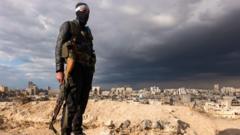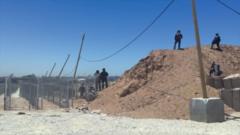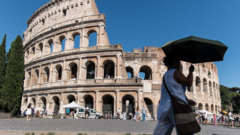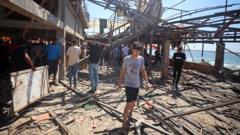In a harrowing twist of nature and tragedy, Syria is grappling with a relentless onslaught of wildfires that have raged for over six days, consuming more than 14,000 hectares of land—a stretch comparable to the size of Washington, D.C. The blazes have primarily targeted the mountainous Latakia region, an area notorious for its dense forests which are now desiccated due to prolonged heat and an alarming lack of rainfall. Meteorological experts and humanitarian organizations have labeled this current drought the worst Syria has experienced in decades.
Wildfires Ravage Syria Amid Dire Drought Conditions

Wildfires Ravage Syria Amid Dire Drought Conditions
Syria faces unprecedented wildfires fueled by the most severe drought in decades, impacting thousands and destabilizing the region.
The aftermath of the wildfires has already proven catastrophic—thousands of residents have been adversely affected, and hundreds of families have been displaced, according to reports from the United Nations. This escalating disaster marks yet another significant challenge for Syria's new leadership, which is tasked with stabilizing a nation still grappling with the implications of a devastating 13-year civil war.
Emergency response is led by Syria's civil defense force, known as the White Helmets, a group previously recognized for rescuing citizens from the ruins of bombed areas during the civil war. Now, they are confronted with the perilous duty of containing the wildfires. However, the impact of years of stringent Western sanctions against President Bashar al-Assad's regime has left these emergency teams struggling with a lack of resources. Insufficient supplies of diesel fuel and critical components for firefighting vehicles are severely limiting their effectiveness as they navigate challenging terrains still marred by unexploded ordnance from earlier conflicts.
The coastal region, which is widely regarded as a bastion of support for Assad and houses a large proportion of Syria's Alawite minority, has been growing increasingly volatile. Just months prior, in March, this region witnessed horrific mass sectarian violence that claimed the lives of about 1,600 individuals, predominantly from the Alawite community. As the wildfires continue to spread, the looming threat of both natural and social unrest presents a daunting scenario for Syria's recovery and future stability.
Emergency response is led by Syria's civil defense force, known as the White Helmets, a group previously recognized for rescuing citizens from the ruins of bombed areas during the civil war. Now, they are confronted with the perilous duty of containing the wildfires. However, the impact of years of stringent Western sanctions against President Bashar al-Assad's regime has left these emergency teams struggling with a lack of resources. Insufficient supplies of diesel fuel and critical components for firefighting vehicles are severely limiting their effectiveness as they navigate challenging terrains still marred by unexploded ordnance from earlier conflicts.
The coastal region, which is widely regarded as a bastion of support for Assad and houses a large proportion of Syria's Alawite minority, has been growing increasingly volatile. Just months prior, in March, this region witnessed horrific mass sectarian violence that claimed the lives of about 1,600 individuals, predominantly from the Alawite community. As the wildfires continue to spread, the looming threat of both natural and social unrest presents a daunting scenario for Syria's recovery and future stability.




















